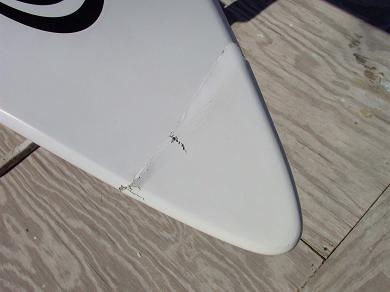 |
Mast slam on tip of nose caused tip to
deflect, rails tore, bottom buckled, feels loose and crunches when
depressed = Divinycell sheared and delam'd |
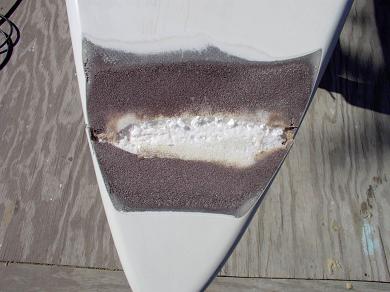 |
Loose stuff ground away to where
adhesion of inner glass to EPS foam, as well as Divinycell to inner glass is
found good. Notice the long bevel on the
Divinycell edges. This is the basis for the scarf joint. |
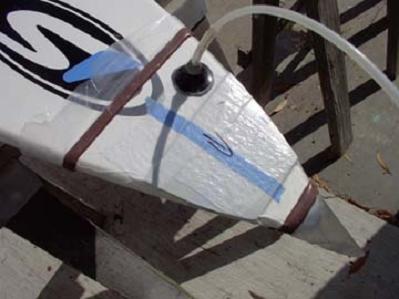 |
Vacuum-bagging the new inner glass
(one 4oz), plus the new PVC foam (1/8" - this is Herex cross-linked), all
set into slow Epoxy to keep the exotherm down - with the resin surrounded
by extremely good insulators (EPS and PVC foams), heat generated by the
curing Epoxy has no way to dissipate. Spectacular melt-downs can be
produced with fast Epoxies in this application! |
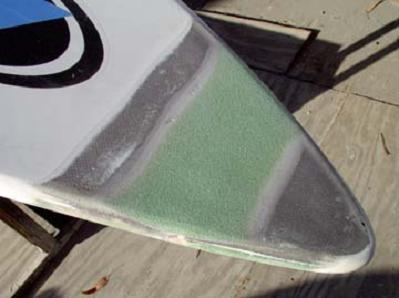 |
The new PVC foam feathered out.
Observe how the new inner glass emerges on the edges, ready to form a
shear joint with the outer glass. Notice also
the total absence of voids and loose edges. Whatever would we do without
vacuum-bagging! |
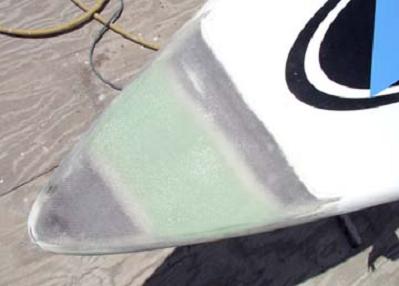 |
Glassed over with the same 8oz of
cloth I found there originally, with an extra two layers of 4oz cloth on the rails.
See how clear a good glass job is! If it looks white,
it is probably too dry! |
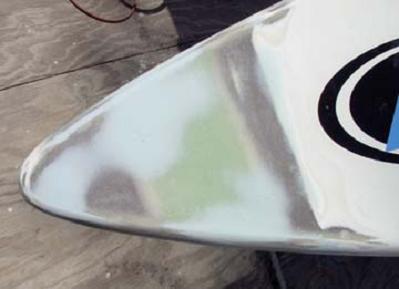 |
Fairing compound applied, and the
whole thing sanded down. Since I worry about fairness all along, the
amount of fairing compound (and extra weight) required is relatively
small. |
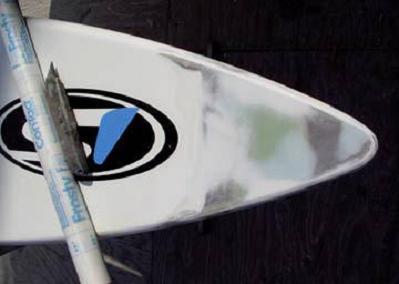 |
Primer applied for the final surface
prep and to show up pinholes, then most of it sanded off again. The self-adhesive shelf paper is a
slick way to mask off decals prior to painting. |
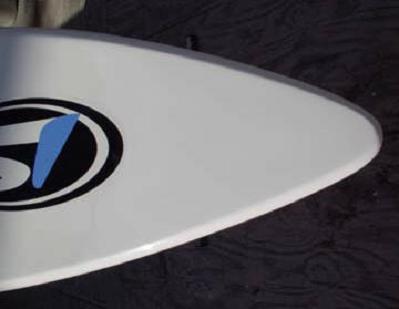 |
Paint applied, shelf paper peeled off,
the whole sanded with wet-and-dry 220, 400, and 600 to match the original
satin-finish paint on the bottom. The gloss rails require sanding to 1200
grit, followed by rubbing compound. Ta-da! |
|
back to Repair Menu |